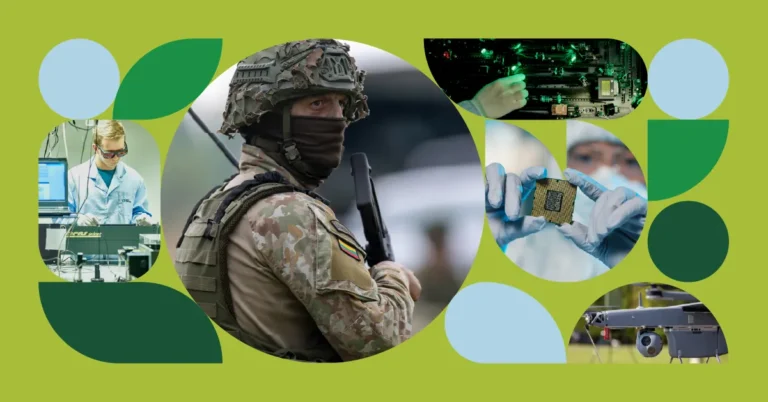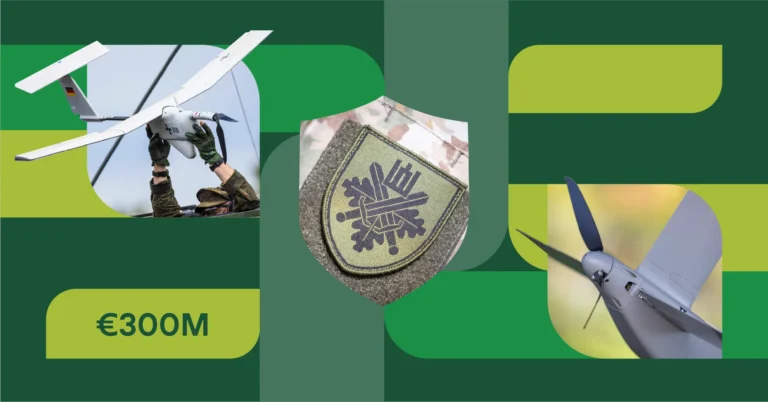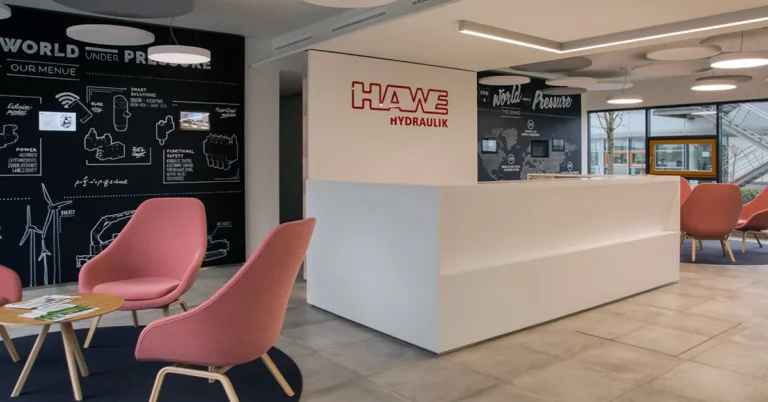The white anti-stat clothing is making me look like I actually know what I’m doing. The blue ESD protection slippers that I have to wear over my shoes, not so much.
We make a left turn and head for the staircase, down the stairs and make a right, then a right again. And now we’re entering the reason to why I’m here; Kitron’s new manufacturing facility in Kaunas, Lithuania.
I’m greeted by a whiteboard. Along the side of it a ballet with the sign “returns”. A constant reminder for everyone; a reminder that there is always room for improvement. And it sits quite nicely, just next to the whiteboard dedicated to problems and issues, and of course the action plans to solve them.
CEO Peter Nilsson tells me that the unit holds daily production meetings. Which start as a “level one meeting” – including production staff – and soon the information travels through the company’s hierarchy to reach the responsible staff members.
[quote text=”Lithuania is becoming a rather important region for the company. After all, the country houses Kitron’s biggest manufacturing unit, both it terms of employee numbers and size of the operations. Lithuania itself – with its location – is expected to open new doors within the European market for the company.” name_surname=”” description=”” left=””]
“This was one of the first things we worked on when I joined. And it was something that I wanted to see us excel at. We developed a strategy and looked at what needed to be implemented for it to be successful. And then we rolled it out. Regardless of how far off a delivery seems to be – or even if its just two days shy – we need keep the momentum. We can not just let things ‘happen’, there has to be control.”, Mr. Nilsson says.
We make a left and enter the manufacturing hall. The four SMT – busy – lines (one dedicated to NPI) are running. It’s not as deafening as I had imagined it to be. SMT, Wave soldering and AOI machines are ticking away. Another 25 meters ahead we make a right turn and enter the hand soldering space as we’re walking towards the NPI designated area.
The meeting room could either be described as a class-A war-room with all necessities for dissecting designs and holding transatlantic meetings. Or as a gamer’s wet dream. I like the latter one.
After another right turn and about 50 meters we enter another hall, a rather big one. Quality and testing. I’m greeted by a mirror with the text “meet our quality control”. I find it fitting, everyone is responsible to meet the standard agreed upon.
The concept of including the small guy – the guys on the factory floor – is not a new thing, nor is it unique. However, acknowledging that these guys are “the first line of defence”, the first ones to see or experience a potential problem and also valuing that fact as well as making themself realise their own importance, is in a way a new concept. They are in fact the biggest part of any manufacturing operation, and thus their opinions should be heard, and that white board from earlier tells me that they are.
“It’s all about planning, implantation and solving problems or issues as they arise. And yes, there will be production halts, and we will find faulty components coming in – but we find them. It would be far worse if we didn’t. And when that happens, you have to be able to quickly adjust and find the appropriate solution,” Mr. Nilsson tells me.
We backtrack a bit and head up the stairs to enter the next area where the testing unit bunkers up. The problem solving part of the testing unit is sitting here; the hackers, my kin (granted, my tinkering might be limited to guitar tech and single-board computers, but still, my kind of people).
I’m starting to realise that the outside of the building tricked me. It is a big building, but it did not look half as big as it actually feels when walking around in it.
We still have ground to cover but getting you acquainted with every inch of the place would just be tedious, so here is a quick ‘mapout’ of the rest. Turn around, cross the hall, left turn, straight, then left again. Backtrack and cross the hall again, go through the hallway to the left and make a right. Down the stairs then turn right twice. Enter the manufacturing hall again, but this time turn right, straight on some 50 meters and then make another right. And there you have it. Easy-peasy no?
[quote text=”If you’re choosing between Kaunas and our operation in China, and consider total cost, its hard to justify production in China when considering the export back to Europe.” name_surname=”” description=”” left=”a”]
The facility spits out some 500 different products from 40 different clients. All of them are found in either the medical, industrial, defence/aerospace, marine/offshore or energy sector. Kitron has another facility not too far from here, which manufactures cable harnesses and HLA. It also supplies this facility.
Lithuania is becoming a rather important region for the company. After all, the country houses Kitron’s biggest manufacturing unit, both it terms of employee numbers and size of the operations. Lithuania itself – with its location – is expected to open new doors within the European market for the company.
“The D/A/CH region (Deutschland, Austria & Switzerland) has become more accessible with the opening of the Kaunas facility,” Mr. Nilsson adds. For the D/A/CH region, Kitron is looking to utilise its strengths for clients in the defence, medical and energy sectors.
Mr. Nilsson tells me that if you’re choosing between Kaunas and our operation in China, and consider total cost (and don’t have a product which demands extremely large work content), its hard to justify production in China when considering the export back to Europe.
At the moment, Kitron employs some 430 people in Lithuania, which makes it the largest facility in terms of headcount. The facility in Kaunas still offers space for additional production, and with that, I do believe the employee numbers will increase. But that is another question for another time. But it is obvious that the company has a very clear strategy for the region, nothing has happened just by chance. Planning, reviewing, execution and follow up, that how it’s done. Then do it again. If you come across an obstacle, then you solve it.
Like CEO Peter Nilsson told me at the end of the interview “We’re not looking to do everything, we are however looking to be the best at what we do.”
Read the full article at evertiq.com













